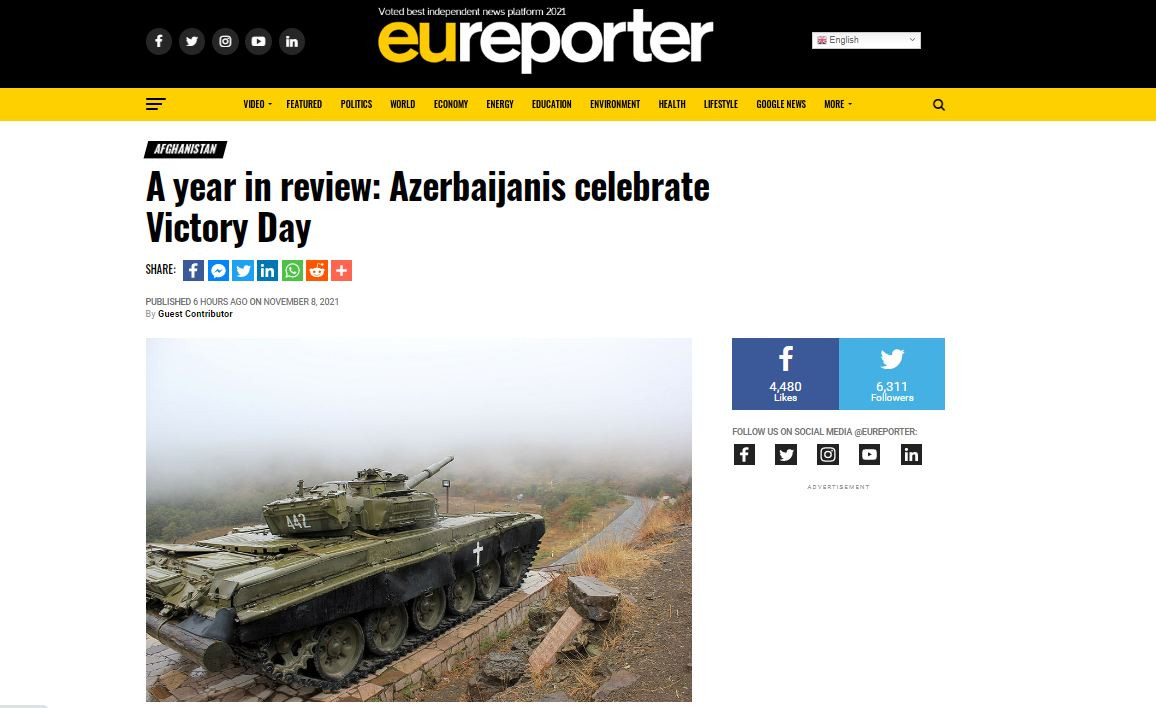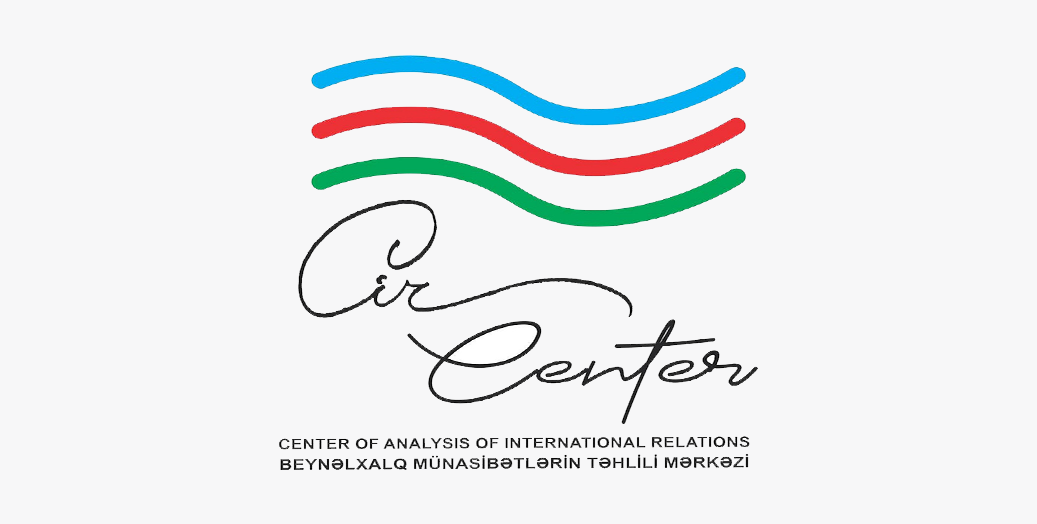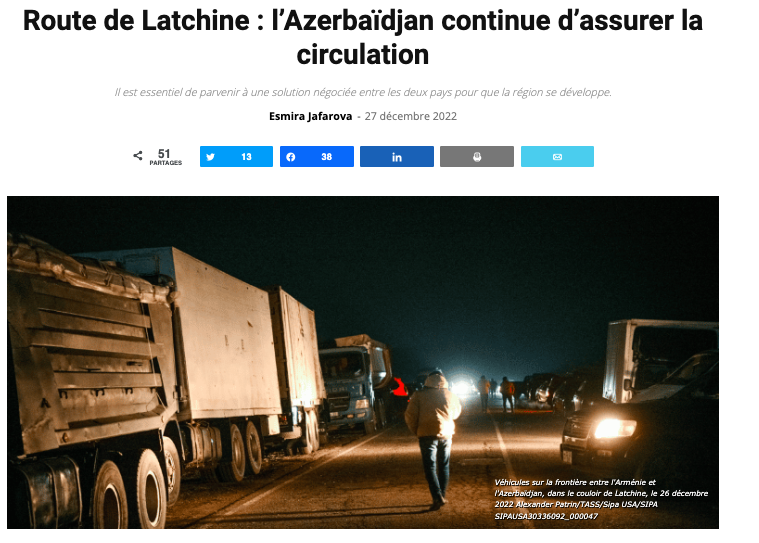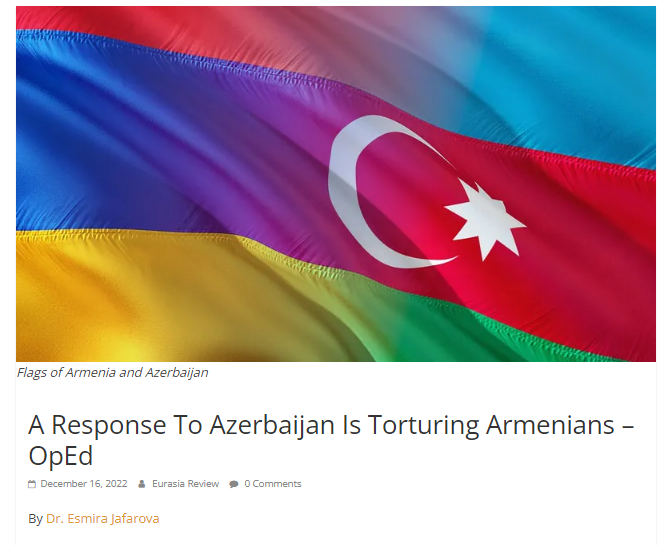8 November, 2021, marks an important one-year anniversary in the history of Azerbaijan and the entire South Caucasus region. The battle of Shusha—a city on a mountain cliff that towers over the entire neighborhood of Karabakh—and its liberation from Armenian occupation on November 8 decided the outcome of the 44-day war that lasted from September 27 to November 10, 2020 - writes Dr. Esmira Jafarova is a Board Member of the Center of Analysis of International Relations (AIR Center), Baku, Azerbaijan.
For years, the conflict in Karabakh continued to cause, directly or indirectly, massive losses of human life on both sides. Azerbaijan has always supported a peaceful resolution of the conflict and, after the change of government in Armenia in 2018, there was hope for a peace deal. However, the new Armenian government missed the opportunity to de-escalate the conflict and support a peaceful resolution. The tension between Armenia and Azerbaijan became worse when, in early 2020, the Armenian prime minister, Nikol Pashinyan, called into question the “Madrid Principles.” These principles were endorsed by the OSCE Minsk Group mediators—France, Russia, and the United States—as well as by the conflicting parties themselves, Armenia and Azerbaijan. However, Nikol Pashinyan disrupted the peace talks by publicly raising doubts about the format for negotiations.
A series of provocations by Armenia, especially the July 2020 cross-border clashes in the direction of the Tovuz district of Azerbaijan, further escalated the situation. Tovuz is a strategic region through which important transport and energy routes connect Azerbaijan to global markets, and it is located far from the conflict zone. Later, Armenia intensified its reconnaissance and sabotage activities along the front line in August 2020 and, on 27 September 2020, launched a massive attack against Azerbaijan. On that day, the Azerbaijani army embarked on a full-scale military counteroffensive to ensure the safety of its civilians. This marked the beginning of the 44-Day war.
The war indeed lasted for 44 days and ended after the liberation of Shusha on November 8 with the signing of the Trilateral Declaration between Azerbaijan, Armenia, and Russia on November 10, 2020.
By decree of the Prezident of Azerbaijan, Mr. Ilham Aliyev, dated December 3, 2020, the day of liberation of Shusha—8th November—is to be celebrated as “Victory Day” every year in Azerbaijan. Shusha, a fortress city founded by Panahali Khan of Karabakh in the 18th century, carries a deeply emotional—close to sacred—cultural importance for Azerbaijan and, throughout centuries, was seen as the “cradle” of Azerbaijani culture. Azerbaijanis never put up with the fact of the occupation of nearly 20 percent of their internationally recognized territories. However, losing Shusha to Armenian occupation was to akin to losing one’s soul. Its liberation therefore became the turning point not only in the conduct of the war, but also in fostering a sense of healing in all Azerbaijanis. By a further decree of President Ilham Aliyev, Shusha was declared the “cultural capital” of Azerbaijan.
The November 10 Declaration that ended the war and enabled solving other thorny issues between Armenia and Azerbaijan, including the liberation of the remaining territories under occupation (Aghdam, Kalbajar, and Lachin) as well as the unblocking of all economic and transport communications in the region, ushered in a different period in the history of the South Caucasus region. The implementation of new cooperation initiatives such as the “six-party cooperation platform” and the establishment of the “Zangezur corridor,” which aims not only to link Armenia and Azerbaijan, but also to play a wider role in enhancing the region’s standing by providing interconnectivity across diverse geographic and geopolitical zones, may fundamentally alter the geo-strategic and geo-economic setting in the South Caucasus and promote cooperation not only therein, but also beyond. Despite some initial resistance on the part of the Armenian leadership to the establishment of the Zangezur Corridor, their recent statements testify to their willingness to provide both rail and highway routes to Azerbaijan, via southern Armenian territories, that would connect the main territory of Azerbaijan with its exclave, the Nakhchivan Autonomous Republic.
Reflecting back on the nearly three decades of occupation and the 44-Day war that finally ended it, one cannot but highlight the immense damage that was inflicted on Azerbaijani territories. The scale of destruction in the liberated Azerbaijani lands is now exposed for everyone to see. Many international guests, upon their visits to the liberated cities of Azerbaijan, have experienced the terrifying and complete destruction of once inhabited and lively cities. Azerbaijan’s religious heritage, mosques and places of worship were not spared either. Out of 67 mosques in the territories that were under Armenian occupation, 65 have been destroyed and the remaining 2 have been severely damaged and desecrated; many other monuments were completely smashed. The city of Agdam is dubbed by many as the “Hiroshima of the Caucasus” owing to the magnitude of destruction. During 30 years of occupation, Armenia destroyed 22 museums hosting over 100,000 artefacts, 927 libraries possessing 4.6 million books, 85 musical schools, 4 theatre buildings, 2 music halls, 4 art galleries, 808 entertainment centers, as well as 63 out of 67 religious monuments.
Azerbaijan is currently fully engaged in the reconstruction of its liberated territories. For 2021, US$1.3 billion have been allocated to the reconstruction projects and the speed of the works carried out so far is staggering. Three international airports are projected to exist in the liberated Karabakh—in Lachin, Fuzuli, and Zangilan. Work on the construction of Fuzuli airport has already been completed, within 8 months, and its inauguration took place on October 26, 2021; this was attended by the President of Turkey, Recep Tayyip Erdoğan. The Horadiz–Agband railway and highway, which constitute the Azerbaijani portion of the Zangezur Corridor, are also under construction. Work on the Lachin and Zangilan international airports, as well as the pilot project for building the region’s first smart village, Aghali in Zangilan district, is also under way. Azerbaijan is determined to rebuild its liberated territories as soon as possible and make them habitable for the country’s IDPs to finally return to their homes. Azerbaijan also speaks of readiness to normalize its relations with Armenia and has made several appeals to sign a peace treaty.
However, one year on, there are still challenges remaining along the way, and, among others, the issue of contamination of the formerly occupied Azerbaijani territories with landmines is outstanding. Unfortunately, Azerbaijani civilians still suffer daily due to the landmines planted by Armenia in the liberated Azerbaijani territories during the years of occupation. According to reports, more than 140 Azerbaijani civilians have been killed and maimed in mine explosions since the end of the 44-Day war. These territories are now considered to be among the world’s most heavily mine-contaminated areas, but Armenia still refuses to fully release its minefield maps to Azerbaijan. To make matters worse, those minefield maps of the Aghdam, Fuzuli, and Zangilan regions that were ultimately delivered by Armenia to Azerbaijan were discovered to be only 25% accurate.
Moreover, revanchist slogans are occasionally hurled through Armenian media propaganda and fed into Armenian society by those whose political survival hinged on the unjust occupation of Azerbaijani territories. It is this air of revanchism and irredentism that still holds Armenia back from full implementation of its obligations under the November 10 agreement, including, first and foremost, Article 4, which stipulates that “the peacekeeping contingent of the Russian Federation shall be deployed in parallel with the withdrawal of the Armenian armed forces.” This makes clear that no Armenian armed forces should now remain in the liberated Azerbaijani territories. However, and unfortunately, there have been repeated incidents since November 10, 2020, when Armenian militias have passed through the Lachin Corridor, come to Azerbaijani territories, and conducted disruptive activities against Azerbaijani servicemen. Incidents of shelling of Shusha by the remnants of Armenian militias still positioned in the Azerbaijani territories where Russian peacekeepers are temporarily deployed, as well as the shelling of Azerbaijani positions in Nakhchivan and liberated Kalbajar from Armenia itself, have also taken place. These actions certainly do not serve the achievement of a lasting peace in the region. If there is one thing that one has to learn from all that has happened, it is that revanchism and expansionism brought neither territorial gains, nor any sort of benefit or happiness, to those who worshipped those policies. What they did bring, though, were destruction, human suffering, and many losses.
Thus, there are clearly many opportunities in addition to the visible challenges of the post-conflict period that need to be overcome. The complexity of the outstanding issues demands transparency, cooperation, and acceptance if there is a genuine wish to move away from the horrors of the past. This should be undertaken by all the stakeholders that signed the November 10, 2020 agreement that ended the 44-Day war, because unilateral efforts will likely be insufficient to ultimately break the vicious cycle of hostility and war.
Our influential partners in the west could also join efforts for working to make sure that the existing agreements are implemented by all and the work on demining and rebuilding the de-occupied territories is done smoothly and effectively. We have already seen an example of successful cooperation when, through the mediation efforts of the United States, European Union, OSCE, Russian Federation, and Georgia, Armenia, in exchange for Azerbaijan returning Armenian detainees, agreed to provide some landmine maps to Azerbaijan—although, as noted above, their accuracy levels were disappointing. However, this example shows that, if there a will to help out with issues of fundamental security importance, such as dealing with the threat of landmines, a way can always be found. We therefore hope to see a more hands-on approach by our western partners in helping Azerbaijan to overcome the landmine contamination problem.
In the 21st century, territorial expansionism should be condemned, not condoned. Learning from past mistakes may usher in a better future and clearer perspectives. Azerbaijan therefore truly hopes that peaceful and meaningful interactions with Armenia will be possible henceforth.
The 8th of November is a momentous day—Victory Day. A day when Azerbaijan finally restored its territorial integrity and ensured the implementation of the four UN Security Council resolutions (822, 853, 874 and 884) of 1993 that called for an immediate, unconditional, and full withdrawal of all occupying forces from the internationally recognized territories of Azerbaijan. It is also the day that determined the future of the South Caucasus, which hopefully will never go back to the way things were.







